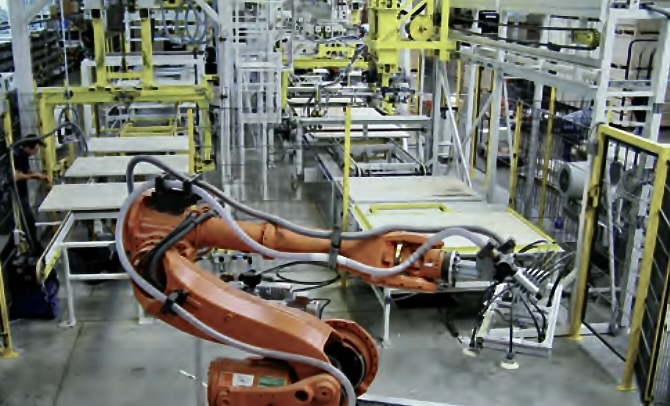
1. Paving block production boards - technical features and customer benefits
The technical features of polyurethane coated pallets are of major importance for the quality of the products manufactured. These important technical features include: stiffness, abrasion and impact resistance, uniform transmission of vibrations over the longest possible lifetime, low weight compared to, for example, plastic or steel worktops, and resistance to changing weather conditions (low temperatures or humidity, or UV rays).
Manufacturers of polyurethane coated pallets agree that the production efficiency of this solution is significantly higher than that of traditional solutions: there is no waste, the vibration is more even and faster - the use of coated pallets saves up to 1.5 seconds in each cycle, which ultimately shortens the cycle by 6 to 8%. In addition, the uniform vibration and consistent moisture content throughout the duration of use contribute to the high level of compaction of the products, thus reducing the amount of cement needed to prepare the concrete mix. Studies confirm that the use of polyurethane-coated boards saves up to 1 kg of cement for each m2 of paving blocks produced.
Compared to softwood production pallets, productivity therefore increases by up to 25%.
The functional advantages are also noteworthy: the boards can be stored outside the production hall, due to their low weight (an Assyx board with dimensions of 1400x1100x50 mm weighs only 40 kg!), they generate lower electricity demand for the equipment in the production line, and the low deflection allows the production of large-size and heavy products (e.g. pavers, large slabs, borders) without the risk of cracks on the surface of the product.
Thus, depending on the manufacturer and the dimensions of the boards, the deflection can be different: in Assyx, for example, the deflection for a 50 mm thick board is 1.5 mm/m for a 500 kg load, Polblat boasts a deflection of between 0.8 - 1.0 mm/m for the same parameters).
The extremely long lifetime of polyurethane-coated plywood boards cannot be underestimated: For example, in the case of Assyx boards we are talking about a reference-supported durability of at least 15 years under the operating conditions of concrete products!
You can read more about the features of the boards after treatment and the "refurbishing" service HERE.
Polyurethane-coated production boards have been on the market since 2006, pioneered by the German company Assyx, which produces its worktops in Andernach am Rhein, about 80 km south of Cologne. Since 2011, a similar solution has been offered by the German manufacturer Wasa GmbH, and since 2019 also by a Polish manufacturer, POLBLAT, based in Skaryszew.
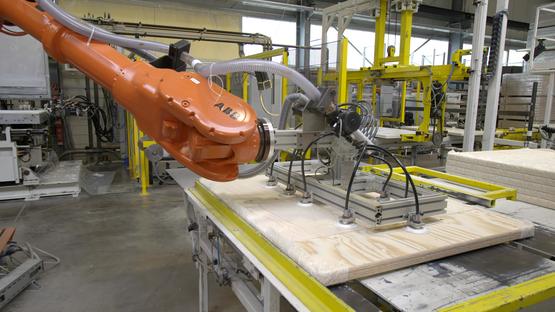
2. The durability of polyurethane-coated boards and methods of extending their life.
The block production boards that went into circulation in 2006 - i.e. one year after Assyx was founded - are still in use at the production sites. The unquestionable benefit is that their lifespan can be extended by repairing them under factory wave conditions (i.e. conditions that do not require high temperatures in the treatment of the repair material). Such repair of deformations or defects in the polyurethane coating can be carried out by an employee of the prefabrication plant using a special repair kit (which can be ordered from the manufacturer).
In addition, Assyx offers its customers the service of refurbishing used polyurethane-coated boards on a special technological line for the ecological treatment of production pallets. The pallets are then restored to their original condition directly in the factory: the customer delivers his used boards and the company recycles them: it removes the damaged areas of the polyurethane coating and reseals the core, thus protecting it from the ingress of water and air.
The boards repaired in this way retain all their original technical parameters: high modulus of elasticity, flexibility and strength. For the manufacturer of concrete products, this brings significant economic advantages, as it results in a product of the same high quality as when it was purchased. For Assyx, the investment made in 2017 and the technological processing line for boards put into operation in 2019 marks a significant step towards a closed material cycle and the production of sustainable ecological bases.
The line offers 2 rôles of service: grinding of boards when the polyurethane coating is so worn (which is a natural occurrence after years of use ) that it needs to be grinded off. Assyx evenly grinds the entire surface of pallets, which after this treatment look like new and can be used again for concrete products.
The second type of treatment concerns boards whose polyurethane coating has been damaged by the action of the gripper jaws or by impacts during in-plant transport. This type of more serious damage requires complete removal of the coating in the affected part, and its restoration returning it to complete integrity. A milling robot that is part of the boards recycling line is used for this purpose.
Below we present a video of a boards repair service that can be carried out in-house at a vibro-pressed product manufacturer.
By watching the video below, you accept YouTube's privacy policy.
3. Construction of polyurethane-coated production boards.
Block production boards are manufactured from different materials or combinations of materials, and can have different construction structures. Depending on the properties of the material and structure, they differ in their vibration characteristics and therefore also in their effect on the efficiency of the compaction process. The manufacturers of polyurethane coated boards listed below speak of an extremely high impact stiffness, i.e. a very low deflection stiffness, which directly affects the quality of the products produced.
Let us therefore look at the various technical aspects of the tops from the manufacturers listed:
A. The core of the board:
- Polblat: offers boards with 2 types of core: wooden, made of high-quality pine wood with a density of 500 kg / m3 (tongue-and-groove joining of the boards, the edges of the boards protected by a semi-closed galvanised profile, pressed in three places and additionally fixed with wood screws, the size of the board can be adapted to the customer's requirements), and plywood, in which the composite material is made up of crossing layers of wood (deciduous - alder, birch, coniferous - spruce) glued together with waterproof glue based on phenol-formaldehyde resin, in which the fibres of adjacent layers run at right angles. Polblat boasts a raw material density in the range of 700-750 [kg/m³] and a moisture content between 4-10 %. In this solution, too, the edges are lapped with a galvanised semi-closed C profile;
- Wasa: WOODPLAST® board core made of softwood or hardwood from certified renewable raw materials glued together in a spline. The edges of the board are fitted with integrated channels made of galvanised steel, which increases its resistance to lateral mechanical impacts, such as those occurring in the board storage area when the board is gripped, and also contributes to the stability of the board;
- Assyx: the core of the board is made of waterproof plywood, glued at high temperature and under pressure (to crystallise the glue and give a high level of water resistance), with additionally the majority (no less than 60%) of the fibres directed along the long side of the board (to achieve a low deflection) and no less than 20% of the fibres directed along the shorter side of the board (to achieve torsion resistance and to stabilise the fibre joints of the layers along the long side of the board). The wooden core is a so-called plywood board consisting of 15 layers. It is manufactured from European spruce or fir. The density of the raw material varies between 500 and 650 kg/m3, the bonding of the plywood layers is water and heat resistant (WPB, AW-100 and other similar specifications). The E-modulus of the core, measured along the long side, remains at an average of 10,000 N/mm2, which guarantees very high bending resistance, flexibility and breaking strength. The sides of the boards are additionally reinforced with 300 g/m2 glass matting.
The plywood board forming the core is manufactured in Finland under the trade name KERTO-Q by MetsäWood. Kerto-Q 'in itself' is a construction product approved by the Finnish and German building authorities for use in the construction of buildings. Below we present a short film about the production of LVL board:
By watching the video below, you accept YouTube's privacy policy.
B. Polyurethane coating:
Thanks to the sealed polyurethane coating, the boards for vibro-pressed products receive additional core reinforcement and additional performance qualities.
All manufacturers emphasise the extreme durability, resistance to abrasion, impact and vibration, resistance to changing weather conditions (varying temperatures, UV radiation, humidity) making it possible, for example, to store the boards outside the hall. However, the most important advantage of polyurethane coating is their extended durability, which is emphasised by all manufacturers.
Defects in the polyurethane are repairable, so it is possible to regenerate the boards in the event of damage due to adverse events. The thickness of the core coating in all the boards mentioned is similar and varies between 2.5 - 3 mm.
For example, the core coating of the Assyx block production board is polyurethane BAYDUR with a thickness of 2.5 to 3 mm. The density of polyurethane is approximately 1,130 kg/m3 and its E-modulus is 1,500 N/mm2. The polyurethane Baydur® was developed and produced specifically for ASSYX DuroBOARD boards by Bayer Material Science AG (now COVESTRO Deutschland AG).
It is impact-resistant, resistant to temperatures between -25°C and +90°C (tested in the laboratory), but also to atmospheric influences and ultraviolet radiation (it can be kept in direct sunlight), is characterised by high chemical resistance (all anti-adhesives, release agents and other chemicals can be used), does not corrode and has a high wear resistance - 10 years of use practically does not change the thickness of the pallet coating.
In addition, once completely covered with a Baydur® polyurethane coating, it never changes its state, maintains the core moisture content at the initial 7-9% level and continues to transmit constant vibrations across the entire surface for many years (shorter vibration time reduces cycle time and energy costs).
The trademark of ASSYX DuroBOARD® are the chamfered corners (14x14mm) and the 7mm chamfer of both edges, which is a guarantee of seamless movement of the tops throughout the cycle.
4. Summary.
Production boards in airtight polyurethane coating are a solution more and more frequently chosen by Polish producers of vibropressed products. A number of functional advantages and the exceptional durability of this solution, combined with the possibility of self-repair or ecological renewal at the manufacturer's site - compensate for the still relatively high price compared to other solutions.
At the same time, the consistently high quality of the products, which are sufficiently compacted as a result of the uniform transmission of vibrations and, thanks to the smooth surface of the polyurethane, do not adhere to the worktop (resulting in a negligible amount of waste), guarantee optimal amortization of the investment.

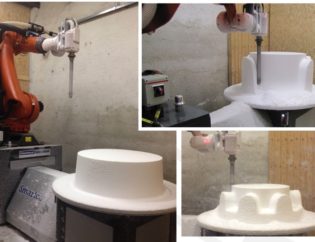
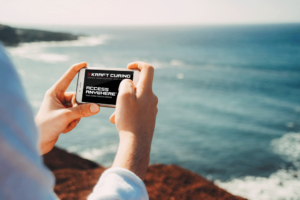
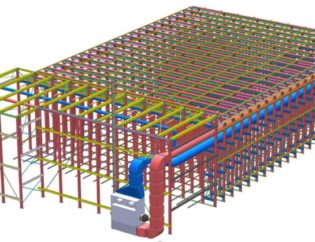
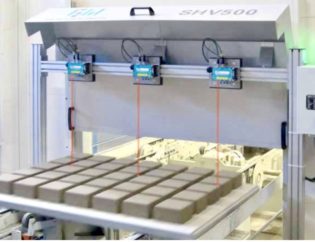
You must be logged in to post a comment.